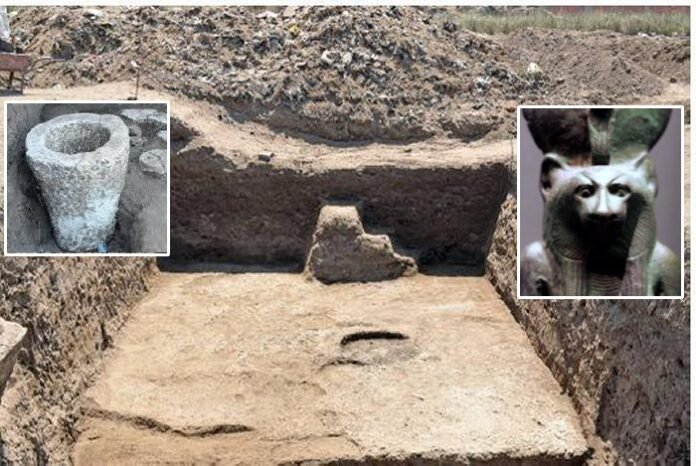Conny Waters – AncientPages.com – At the end of the current excavation season conducted by the British archaeological team from the University of Manchester, researchers made a significant discovery, unearthing the remains of a city.
Lioness-headed Wadjet. (between 664 and 332 BC Late Egyptian period (664 BC –332 BC ) . Department of Egyptian Antiquities of the Louvre Museum – CC BY-SA 3.0 FR
The team unearthed the remains of a long-forgotten ancient city in Egypt’s eastern Nile Delta. The site, situated in the Pharaoh Hill in Al-Sharkia Governorate, in Egypt’s eastern Nile Delta, is thought to be the ancient city of Imet.
This location was once a prominent center for daily life and commerce in Lower Egypt.
Dr. Mohamed Ismail Khaled, Secretary-General of the Supreme Council for Archaeological Council, informed that the excavations were strategically planned rather than coincidental.
The British-led team concentrated its efforts on this specific area based on data obtained through remote sensing and satellite imagery techniques, such as LANDSAT.
The temple platform at the ancient city of Imet. Credit: Egypt’s Ministry of Tourism and Antiquities
These technologies helped pinpoint significant concentrations of mud bricks, guiding researchers to areas of potential historical importance.
Researchers discovered residential buildings that probably date back to the 4th century BC. At the time, the city of Imet played an important role in Egypt’s economy and culture.
Archaeologists have uncovered massive mudbrick foundation walls in these structures to support the substantial weight of the building itself. This architectural style was particularly prevalent in the Nile Delta region and date back to the late Roman era. It suggests the existence of tall residential buildings more like tower-shaped, multi-storey houses that could accommodate a large number of people.
The buildings of this kind provide evidence of a well-organized and densely populated urban area. The team also found storages for grain, and animal shelters.
A carved limestone block (a fregment) – decorated with symbolic motifs. Image credit: Egypt’s Ministry of Tourism and Antiquities
Within the temple vicinity, archaeologists discovered an extensive limestone floor alongside remnants of two massive mud brick columns, likely once coated in plaster. These findings are thought to be part of a structure constructed above the procession road linking the Late Age Declaration and Wagit Temple Declaration, but this road probably ceased to be in use by mid century.
Among other important discoveries related to the ancient city of Imet, there is also a stone painting depicting the god Horus standing on two crocodiles holding a snake, topped with a portrait of the god only, as well as a bronze musical instrument (sistrum) decorated with the heads of the goddess Hathor, dating back to the end of the late age. Hathor was a goddess who personified the principles of joy, feminine love, and motherhood.
Dr. Nikki Nelson, the mission’s director, said that the city of Emt was a prominent residential center, particularly during the modern and late state era. It was distinguished by a large temple dedicated to the goddess Wadjet, with its ruins still visible on the western side of the site. This discovery is a new step toward completing the archaeological and historical picture of the city of Imet, and no doubt, more future studies will help uncover the secrets of this ancient city.
Written by Conny Waters – AncientPages.com Staff Writer








